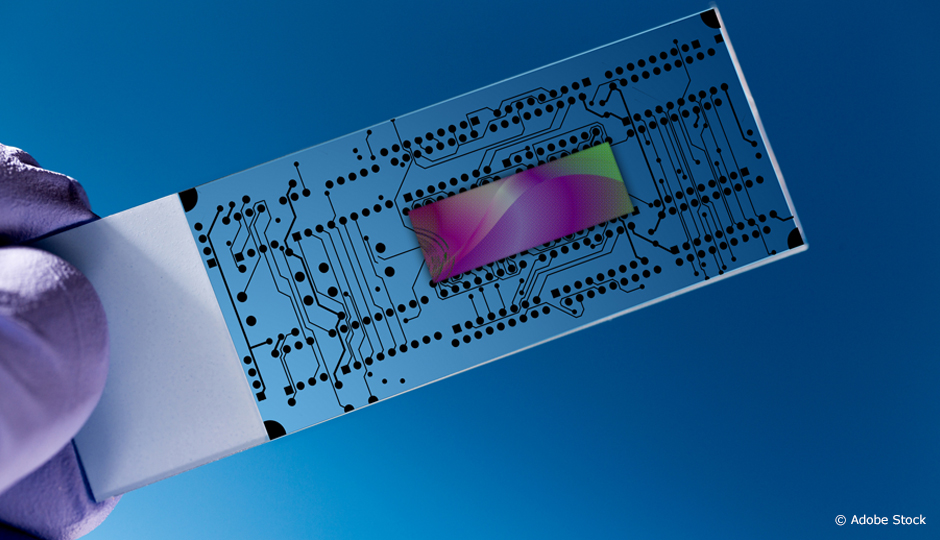How can we better transport drugs within the human body? Through microfluidics. This science of manipulating fluids at the micrometre scale makes it possible to construct miniature laboratories on chips (lab-on-chip technology) for a range of applications including the testing of encapsulated drug molecule transportation.
Using advanced microscopy, the researcher was able to track these nanoparticles over time.
Like a tree that moves sap along a network of thousands of tiny veins in its leaves, a microfluidic system circulates fluids in microscopic channels separated by membranes 100 times thinner than a human hair. However, these are often synthetic and incompatible with the human body.
In search of another solution that is both natural and biocompatible, Jesse Greener, a researcher at the CHU de Québec–Université Laval research centre, turned to chitosan, a natural molecule extracted from shrimp shells. The chemist observed that, by adjusting the pH and the ambient temperature, it is possible to form or deconstruct chitosan membranes between two liquids circulating in a microfluidic system. For the first time, he also succeeded in customizing the thickness of the membranes, allowing him to add nanoparticles of silica, the most promising means of transporting drugs in the body. Using advanced microscopy, the researcher was able to track these nanoparticles over time. With his team, he even built a membrane that has nearly 10 layers of nanoparticles to be able to release several drugs at different times.
Given these results, Jesse Greener believes that chitosan membranes could be combined with collagen to serve as cell support in regenerative medicine and to create organs-on-a-chip: a promising avenue that he is following closely!




